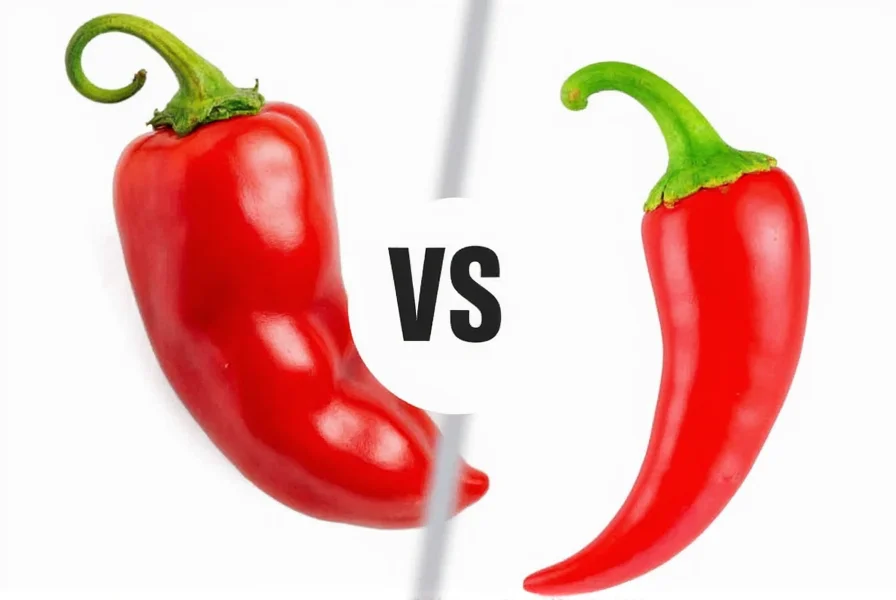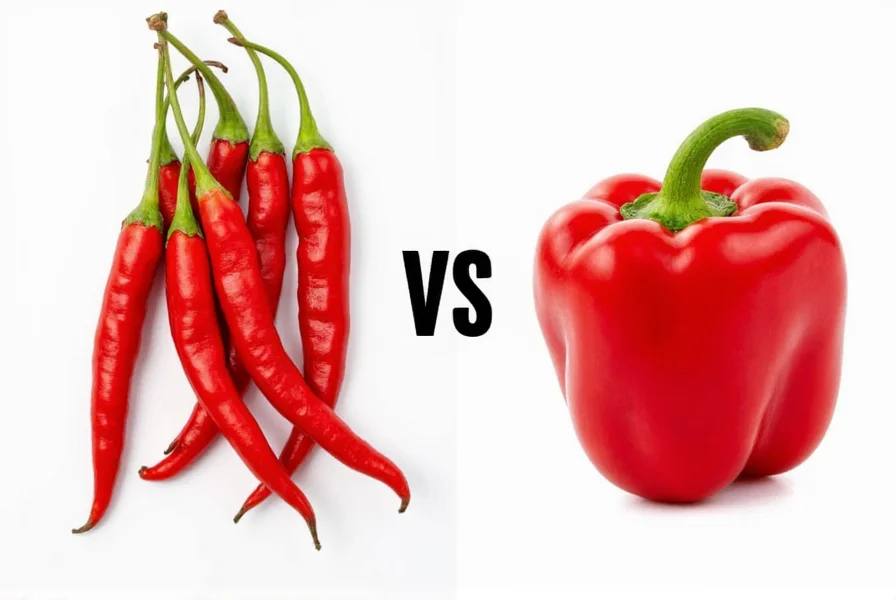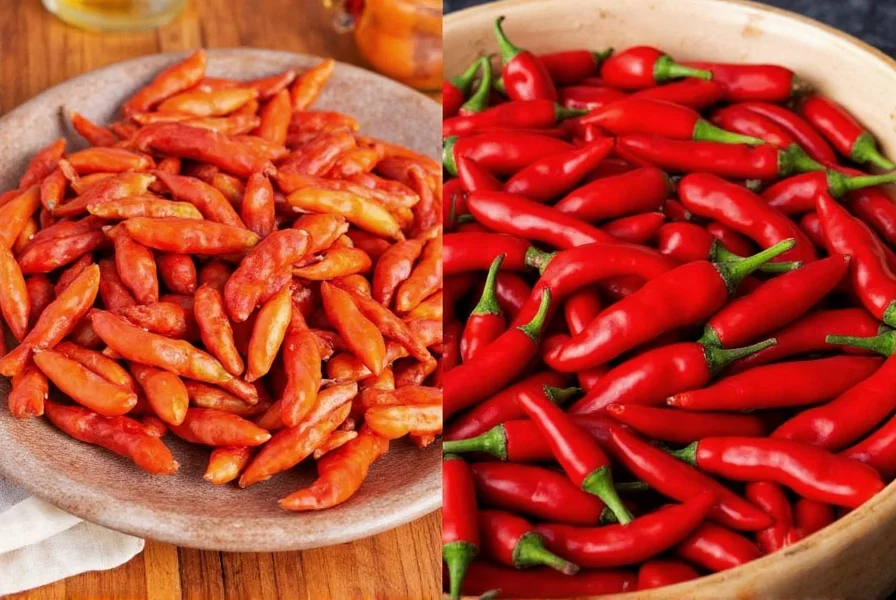When comparing cayenne pepper vs chili pepper, many home cooks and culinary enthusiasts encounter confusion due to overlapping terminology. This comprehensive guide clarifies the botanical, culinary, and practical distinctions between these commonly conflated ingredients.
Botanical Classification and Origins
Cayenne pepper (Capsicum annuum var. avensis) originates from French Guiana but now grows worldwide. It belongs to the Solanaceae family, sharing lineage with bell peppers and tomatoes. Mature cayenne peppers measure 2-5 inches long, ripening to vibrant red with tapered ends.
Chili peppers encompass multiple Capsicum species including annuum, frutescens, chinense, and baccatum. This category includes jalapeños, habaneros, serranos, and ghost peppers – each with unique genetic profiles. The term “chili” derives from the Nahuatl word “chīlli,” adopted globally through Spanish colonization.
Heat Level Comparison
Understanding Scoville Heat Units (SHU) is crucial when substituting peppers. The cayenne pepper vs chili pepper heat difference significantly impacts recipe outcomes:
| Pepper Type | Scoville Heat Units | Heat Relative to Cayenne |
|---|---|---|
| Cayenne Pepper | 30,000-50,000 SHU | Baseline |
| Jalapeño | 2,500-8,000 SHU | 1/6th as hot |
| Serrano | 10,000-23,000 SHU | Half as hot |
| Habanero | 100,000-350,000 SHU | 3-7x hotter |
| Ghost Pepper | 855,000-1,041,427 SHU | 20x hotter |
Cayenne maintains consistent medium-high heat, while “chili pepper” spans from mild (poblano at 1,000 SHU) to extreme (carolina reaper at 2.2 million SHU). This explains why substituting random chili peppers for cayenne often produces unpredictable results.
Flavor Profiles and Culinary Applications
Cayenne delivers sharp, immediate heat with subtle berry notes and earthy undertones. Its fine powder form integrates seamlessly into sauces, rubs, and spice blends. Professional chefs value cayenne for its predictable heat distribution in:
- Cajun and Creole seasoning blends
- Marinades requiring uniform heat
- Commercial hot sauces needing consistent spiciness
- Dusting finished dishes for controlled heat
Chili peppers offer diverse flavor experiences beyond heat:
- Chipotle: Smoked jalapeño with sweet, smoky depth (used in adobo sauce)
- Guajillo: Tangy, berry-like notes (essential in Mexican moles)
- Thai Bird's Eye: Floral heat with citrus undertones (key in Southeast Asian cuisine)
- Anaheim: Mild, grassy flavor (stuffed peppers and roasts)
When exploring cayenne pepper vs red pepper applications, note that “red pepper” often refers to paprika in culinary contexts – a completely different ingredient ranging from sweet to hot varieties.
Nutritional Comparison
Both contain capsaicin (the compound creating heat), but concentrations differ significantly:

Cayenne provides approximately 44% of daily vitamin C per teaspoon, while milder chilies like poblanos offer only 10%. Capsaicin content directly correlates with heat level – cayenne contains about 0.1-1% capsaicin by weight versus 0.01% in jalapeños.
Research shows capsaicin may boost metabolism and reduce inflammation, but effects vary by concentration. Those seeking health benefits from cayenne versus other chili peppers should consider both heat tolerance and desired therapeutic effects.
Substitution Guidelines
Understanding cayenne pepper vs chili powder differences prevents culinary disasters. Remember:
- Cayenne powder = pure ground cayenne peppers
- Chili powder = blend typically containing cumin, garlic, oregano, and multiple chili varieties
When substituting:
- Replace 1 tsp cayenne with 1.5 tsp medium-hot chili powder (adjust for blend strength)
- Use 1/2 tsp cayenne for every 1 fresh serrano pepper
- For milder heat, substitute paprika at 2:1 ratio (2 tsp paprika = 1 tsp cayenne)
- Never substitute ghost pepper for cayenne – the heat difference exceeds 20x
Common Misconceptions
Several myths persist in the cayenne pepper vs chili pepper debate:
- Myth: “Cayenne and red pepper are identical.”
- Fact: “Red pepper” refers to multiple varieties; cayenne is one specific type.
- Myth: All chili peppers are interchangeable in recipes.
- Fact: Heat levels vary 1000x between mildest and hottest varieties.
- Myth: Drying peppers increases their heat.
- Fact: Drying concentrates capsaicin but doesn't create more – fresh and dried forms of the same pepper have identical SHU.
Practical Selection Tips
When choosing between cayenne and other chili peppers:
- Examine color consistency – quality cayenne powder shows uniform bright red hue
- Check expiration dates – capsaicin degrades after 6-12 months in ground form
- Smell before purchasing – fresh cayenne should have sharp, clean aroma without mustiness
- For whole peppers, select firm specimens without wrinkles or soft spots

Conclusion
The cayenne pepper vs chili pepper distinction matters significantly in culinary applications. Cayenne provides reliable medium-high heat with consistent flavor, while “chili pepper” encompasses a spectrum of options requiring careful selection based on desired heat level and flavor profile. Understanding these differences empowers cooks to make informed substitutions and achieve precise flavor results. Whether exploring mild chili varieties for subtle warmth or harnessing cayenne's potent kick, recognizing each pepper's unique characteristics elevates culinary outcomes.











 浙公网安备
33010002000092号
浙公网安备
33010002000092号 浙B2-20120091-4
浙B2-20120091-4